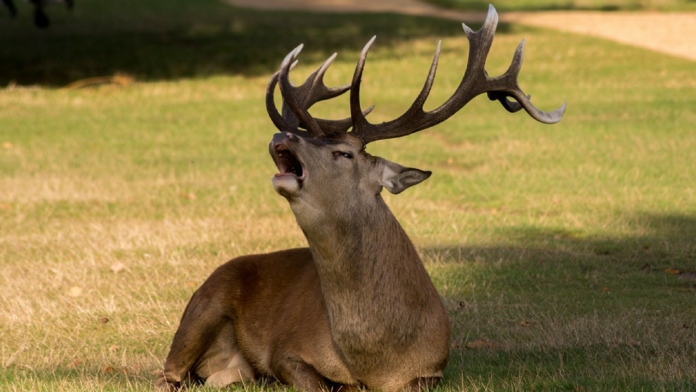https://www.google.com/url?rct=j&sa=t&url=http://alphanewsmn.com/deer-unlimited-minnesota-hunters-maybe-allowed-bag-deer/&ct=ga&cd=CAEYACoUMTg0MDEwMzkzMTY1MTk4NjU4ODYyGmZjMjVkY2RmMTQyNDZkOTE6Y29tOmVuOlVT&usg=AFQjCNEvF6gtZ6hNqNrUPcdk3p_IyTeUQQ
Deer Unlimited; Minnesota Hunters Maybe Allowed to Bag more Deer
"Increase in Bag Limits Will be to Properly Maintain the Deer Population"
ST. PAUL, Minn- A recent DNR assessment of Minnesota’s deer population indicates it is likely hunters will be allowed to bag more deer during the next deer hunting season.
Adam Murkowski, Big Game Program Leader at MN DNR explained the situation with deer population recovery.
“Minnesota splits the deer population based on a division of units corresponding to relatively equal sized spaces,” Murkowski told Alpha News. “The DNR monitors the size and health of the population within these units. Each unit has a population goal decided on through an involved public hearing process.”
Findings from the surveys done recently indicate a significant increase in the amount of bucks harvested within certain areas being surveyed. Some of the biggest increases in the deer population came in the Northern areas of the state including what is known as the “wolf range,” which has had notoriously low deer populations in the past.
In the not too distant past, harsh winters caused the deer population to drop so low that the DNR put strict hunting regulations in place. Murkowski says the increase in the deer population is mostly attributed to the mild winters for the last couple of years, in addition to the regulations.
The state hasn’t made any specific changes to the amount of deer that hunters can tag, however, this process is often completed during the summer. Murkowski said that any, “increase in bag limits will be to properly maintain the deer population.”
Murkowski hopes to continue to effectively administer the deer population, which he stated “will be done through a long term deer plan, not a hunting plan.”
“[This plan] is unique in that it does not focus predominantly on the deer hunting as the primary motivation for the management of the deer population,” Murkowski said. “This change in what motivates the conservation plan could play an important role in deciding the specific tactics to be used, which will focus more on the health of the deer population.”
Other possible changes to occur in the upcoming hunting season is the allowance of elk hunting within Minnesota. In Northwestern Minnesota there is a unique wild elk population consisting of three elk herds. While the tags available for elk hunting will be limited to 13, Murkowski says it will give hunters the experience of hunting elk in Minnesota.
“The DNR and the University of Minnesota are working on plans to reintroduce more elk into Minnesota and a likely spot for reintroduction will be between Duluth and Hinkley,” Murkowski said.











No comments:
Post a Comment